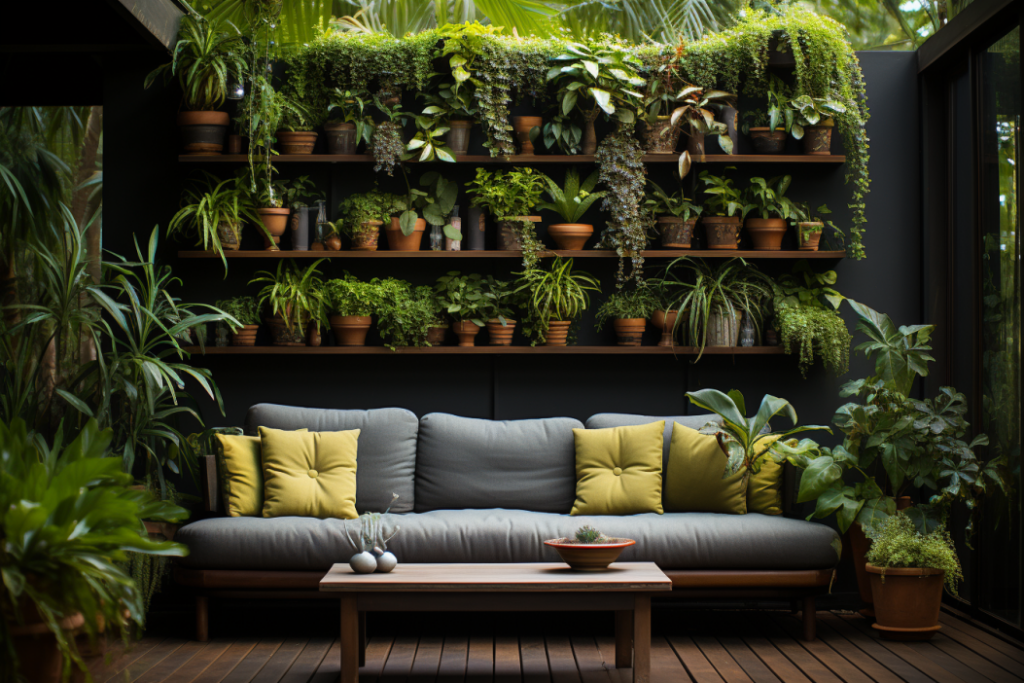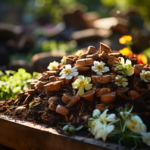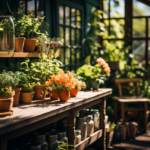Table of Contents
Maximize Your Kitchen Garden Space with These Pro Tips on Vertical Gardening
Hey there! Do you love gardening but haven’t got enough space to grow all your favorite plants? Are you tired of traditional horizontal gardening? Well, we have good news for you! Vertical gardening is here to help. Whether you have a small balcony or a big backyard, adding a vertical garden to your space can make a huge difference. Vertical gardening not only saves space but also looks beautiful and adds greenery to your surroundings. In this guide, we will show you everything you need to know about vertical gardening from choosing the right plants to creating unique designs. So, let’s get started and transform your kitchen garden into a green paradise!
Benefits of Vertical Gardening
Vertical gardening is an innovative way to grow plants that not only saves space but also offers a range of other benefits. Here are some reasons why you should consider creating a vertical garden in your kitchen garden:
Saves Space
One of the most significant advantages of vertical gardening is that it allows you to grow more plants in a limited space. If you have a small balcony or tight backyard, vertical gardening is an excellent way to maximize your growing space.
Improves Air Quality
Vertical gardening not only adds greenery to your surroundings but also helps to improve the air quality. Plants absorb carbon dioxide and release oxygen, which results in the purification of the surrounding air.
Provides Ease of Maintenance
Vertical gardens are easy to maintain compared to traditional horizontal gardens. You don’t have to worry about soil-borne diseases, pests, or weeding. With vertical gardens, you can easily monitor your plants’ health and water them accordingly.
Offers Aesthetic Appeal
Vertical gardening is a beautiful way to add a touch of beauty to your surroundings. You can create unique designs with a variety of plants, textures, and colors. You can also choose different kinds of vertical gardening systems that suit your preference.
Boosts Mental Health
Lastly, creating a vertical garden is great for your mental health. Gardening is a great stress-reliever, and studies show that it can have a positive impact on mental health. So, not only will you enjoy the beauty of your vertical garden, but you will also benefit from its positive effects on your mind and wellbeing.
Overall, vertical gardening is an excellent way to grow plants in a limited space while enjoying various other benefits. In the next section of this guide, we will show you how to get started with your own vertical garden.
Choosing the Right Plants for Your Vertical Garden
Choosing the right plants for your vertical garden is crucial for a successful and prosperous garden. Here are some points to consider while selecting plants for your vertical garden.
1. Size and Weight of the Plants
When choosing plants for your vertical garden, consider the size and weight of the plants. Make sure you select plants that are lightweight and won’t put too much pressure on the structure or wall that you’re using. Choose plants that have shallow root systems and small leaves. Good options include herbs, strawberries, and succulents.
2. Environment
The environment plays a crucial role in plant selection. Choose plants that can thrive in the micro-climate of your garden. Observe the amount of light and wind your vertical garden will receive. If the garden gets a lot of sunlight, choose plants that can tolerate direct sunlight. If the garden is sheltered, you may need to choose plants that can tolerate shade.
3. Maintenance
Another vital aspect to consider is the maintenance of the plants. Choose plants that require little maintenance to save time and effort. Drought-tolerant plants such as sedums, agave, and succulents are good options because they require minimal water.
4. Aesthetic Appeal
Finally, choose plants that add aesthetic appeal to your vertical garden. Pick plants with vibrant flowers, foliage, or fruits to add color and texture to your garden. Incorporate contrasting textures and colors to create visual interest and depth.
In conclusion, choosing the right plants for your vertical garden is paramount. Consider the size and weight of the plants, the environment, maintenance, and aesthetic appeal when selecting the plants. By doing so, you’ll help ensure a successful and flourishing vertical garden.
How to Design Your Vertical Garden
Designing your vertical garden can be an exciting and creative process. You can customize the design to fit your unique style, space, and needs. Here are some essential tips and ideas to create a stunning and functional vertical garden for your kitchen garden:
Assess Your Space
Before starting the design, take a closer look at your space. Consider the following factors:
- Amount of light: Analyze the amount of sunlight your space receives during different times of the day
- Available space: Measure your intended space to design a garden that fits perfectly
- Environment: Think about your location and determine the types of plants that will flourish in your area
Choose Your Vertical Garden Style
There are many types of vertical garden styles to choose from. Some popular styles include:
- Wall-mounted garden: Great for small spaces and indoor gardens
- Hanging garden: Perfect for balconies or patios
- Framed garden: A beautiful and creative way to add greenery to your space
Select Your Containers
Vertical gardens can use any kind of container capable of holding soil. Some options could be:
- Pots: Small Pots work nicely for herbs and succulents
- Fabric Pots: Perfect for outdoor vertical gardening.
- Hydroponic Systems: Best for professional gardeners, they require little to no soil.
Choose containers that fit your style and budget while allowing your plants to thrive.
Add Your Plants
When choosing plants, consider your space, style, and personal preferences. Some plants do better than others in given scenarios. Here are some plant species ideas:
- Herbs like Basil, Lemon Balm, Mint, and Dill, which are excellent for seasoning.
- Vegetables like carrots, cucumbers, and tomatoes that are rich in vitamins.
- Succulents like stonecrop and sedum, that require minimal maintenance.
Adding plants and arranging them can help showcase your gardening style.
With these tips and ideas, you can now start designing the perfect vertical garden for your kitchen garden. Remember to be creative and have fun in creating your garden design.
Tips for Growing a Successful Vertical Garden
Vertical gardening is growing rapidly in popularity, and rightly so. It is an efficient way to maximize your gardening space, and it can make a visually stunning addition to your home decor. However, it is essential to consider a few factors to ensure you are successful with your vertical garden. Here are some tips to help you keep your vertical garden healthy and thriving:
1. Choose the Right Spot
The first step to growing a successful vertical garden is finding the right spot for it. Ideally, your garden should receive adequate sunlight, and it should be easy to access for watering and maintenance.
2. Pick the Right Plants
Choosing the right plants for your vertical garden is crucial to its ultimate success. You’ll need to select plants that are well suited to growing in containers and can adapt well to growing vertically. Some popular choices include:
- Peppers
- Tomatoes
- Herbs like mint, basil, and rosemary
- Lettuces and other greens
3. Use the Right Soil and Fertilizer
Since they are growing in a limited space, the soil you use for your vertical garden must be well-suited for container gardening. Make sure to use high-quality potting soil and add compost for additional nutrients.
4. Keep Your Vertical Garden Watered
Watering your vertical garden can be tricky as you need to get the water to travel down through several layers of soil. The best time to water your garden is in the morning. This will ensure that the soil is adequately moistened throughout the day. Do not over-water your plants as this can cause root rot and other diseases.
5. Regularly Prune Your Plants
Pruning your plants is crucial to keep them healthy and thriving. Regular pruning helps your plants focus their energy on growth and flower production. It also prevents overcrowding, which can lead to disease and pests.
By following these tips, you’ll be on your way to growing a thriving vertical garden in no time. From selecting the right plants to providing the proper care, your garden can be both beautiful and productive. So get started today and enjoy the many benefits of vertical gardening!
Conclusion
In conclusion, vertical gardening is a fun, affordable, and easy way to add greenery to your living spaces while saving valuable garden space. With this essential guide, you now have all the tools and knowledge you need to create your own vertical garden and grow a variety of healthy plants that will provide you with fresh herbs, fruits, and vegetables without having to leave the comfort of your home. Follow these tips, choose the right plants, design your garden, and nurture your plants with proper care and your garden will soon become a stunning and functional focal point that you can be proud of. Happy gardening!









